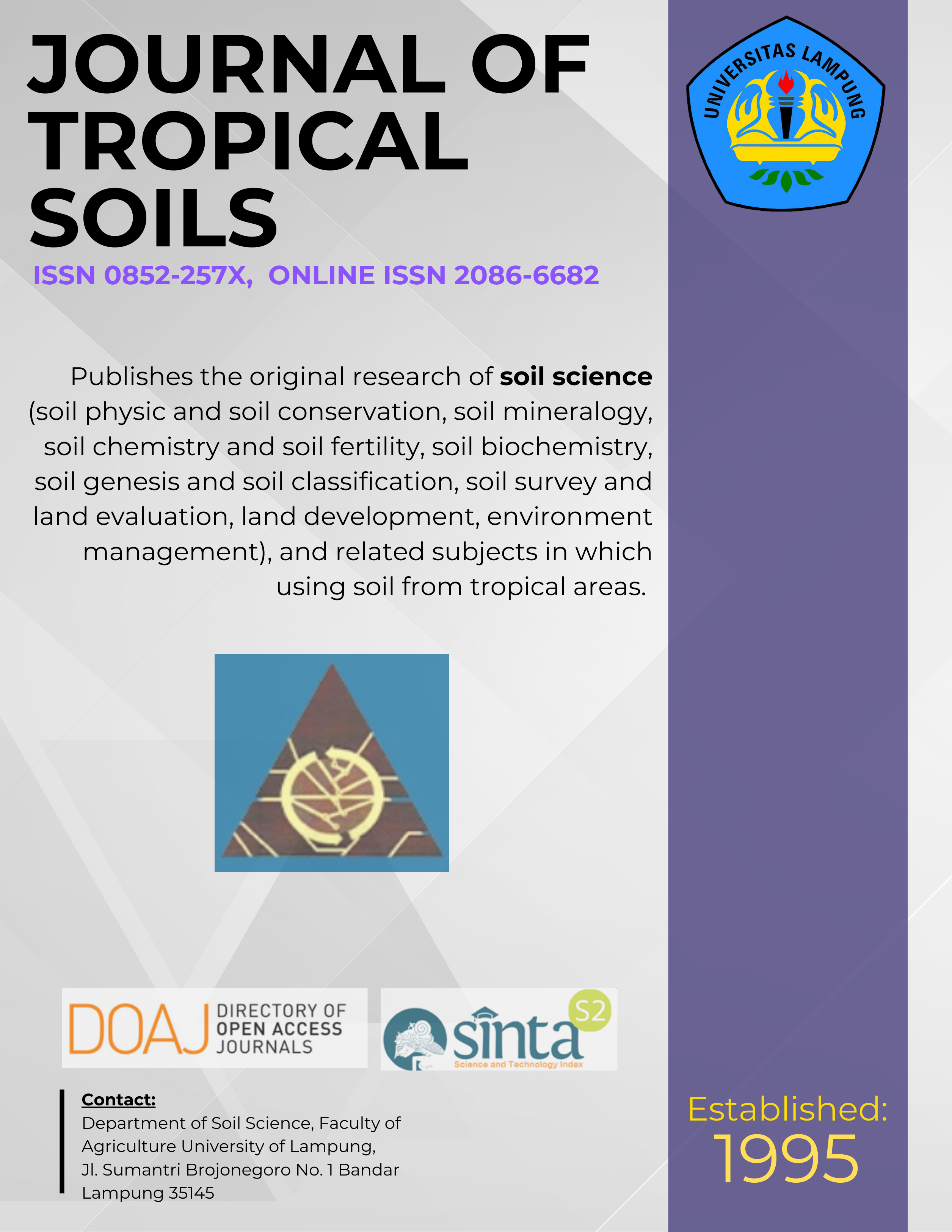Penggunaan Metode Bioassay untuk Mendeteksi Pergerakan Herbisida Pascatumbuh Paraquat dan 2,4-D dalam Tanah
Main Article Content
Abstract
A simple and cheap method to detect herbicide residue in soil and water is urgently needed as the quantity and frequency of herbicide usage is steadily increasing in Indonesia which raises concern about the effects of herbicide residue in soil and water. This study is the third step from a series of studies aim to develop bioassay technique to detect the present and quantity of herbicides in soil and water. In this study, bioassay was used to detect movement of paraquat and 2,4-D herbicides in soil. Study was carried out using soil column method. Treatments were arranged factorially in a completely randomized block design with 3 replicates. Two ultisol soil types: Podsolik Merah Kuning (PMK) and Latosol Coklat (LC) and 2 post emergence herbicides: paraquat and 2,4-D, were tested. To calculate the amount of herbicide using bioassay, each standard curve for paraquat and 2,4-D were developed. Using these standard curves, the amount of paraquat and 2,4-D was calculated based on the growth rate of caisim as indicator plant. Results showed that bioassay method can be utilized to detect herbicide movement in soil. The amount and the rate of herbicide movement were determined by soil and herbicide types. In PMK, paraquat reached the depth of 20-30 cm at 2 weeks after application (WAA), however, after that the amount of paraquat found was very limited. In LC, the movement of paraquat was more limited compared to its movement in PMK. Paraquat reached soil depth of 10-20 cm at 2 WAA, afterward paraquat was only detected in soil depth of 0-10 cm. Similar pattern was observed for 2,4-D which reached soil depth of 30-40 cm at 1 WAA in PMK.  In LC, 2,4-D movement was more limited. At 2 WAA, 2,4-D in LC reached soil depth of 30-40 cm in limited amount and after 12 WAA the herbicide was detected only at soil depth of 0-10 cm.
Downloads
Download data is not yet available.
Article Details
Section
Articles
License for Authors
Authors who publish with this journal agree to the following terms:
- Authors retain copyright and grant the journal right of first publication with the work simultaneously licensed under a Creative Commons Attribution License that allows others to share the work with an acknowledgement of the work's authorship and initial publication in this journal.
- Authors are able to enter into separate, additional contractual arrangements for the non-exclusive distribution of the journal's published version of the work (e.g., post it to an institutional repository or publish it in a book), with an acknowledgement of its initial publication in this journal.
- Authors are permitted and encouraged to post their work online (e.g., in institutional repositories or on their website) prior to and during the submission process, as it can lead to productive exchanges, as well as earlier and greater citation of published work (See The Effect of Open Access).
License for Regular Users
Other regular users who want to cite, distribute, remix, tweak, and build upon author’s works, even for commercial purposes, should acknowledge the work’s authorship and initial publication in this journal, licensed under a Creative Commons Attribution License.
How to Cite
Penggunaan Metode Bioassay untuk Mendeteksi Pergerakan Herbisida Pascatumbuh Paraquat dan 2,4-D dalam Tanah. (2008). JOURNAL OF TROPICAL SOILS, 13(3), 199-208. https://doi.org/10.5400/jts.2008.v13i3.199-208

